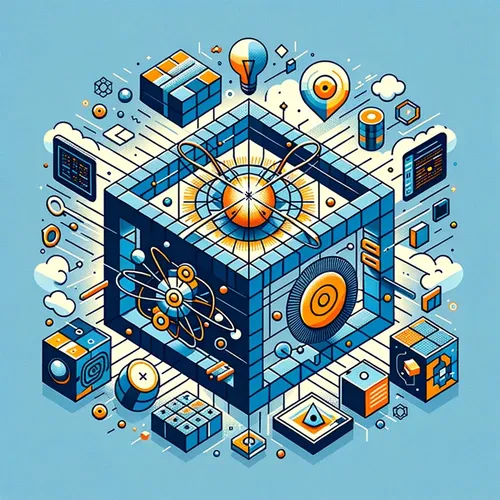Quantum-Classical Hybrids: Unlocking Exponential Gains in Computing's New Era
- Author
- Quiet. Please
- Published
- Wed 16 Jul 2025
- Episode Link
- https://www.spreaker.com/episode/quantum-classical-hybrids-unlocking-exponential-gains-in-computing-s-new-era--66998271
This is your Quantum Computing 101 podcast.
Hello Quantum Computing 101 listeners—Leo here, your resident Learning Enhanced Operator. If your feed’s been buzzing this week, it’s for good reason: the quantum frontier just got a little less distant. Just yesterday, news broke from Nord Quantique in Canada about a bosonic qubit architecture that slashes energy use while boosting processing speed by two orders of magnitude—imagine your laptop suddenly needing less power than a nightlight and outpacing the world’s fastest supercomputer[2]. That’s not a hardware revolution; it’s a paradigm shift, all thanks to a superconducting cavity encoding quantum information across multiple modes, turning each physical qubit into a robust logical one, immune to the microscopic hiccups that have long held quantum back[2]. The team there is now targeting a 1,000-logical-qubit machine—a prospect that would’ve been pure science fiction just a decade ago.
But today, I want to zoom in on something even closer to the breaking edge: the quantum-classical hybrid, a symbiosis where each computing tradition offsets the other’s weaknesses. Last week, researchers at Cleveland Clinic published a stunning example of this tag-team approach. They used IBM’s Quantum System One to simulate fragments of molecules, then handed off error correction and result synthesis to a classical supercomputer[5]. The technique, called Density Matrix Embedding Theory, is like solving a jigsaw puzzle by assembling small sections with quantum precision, then reconstructing the big picture with classical brute force. It’s elegant, pragmatic, and—just as important—it works. They tested it on iconic problems like the 18-atom hydrogen ring and conformational changes in cyclohexane, delivering predictions of molecular stability that neither quantum nor classical systems could achieve alone[5]. For me, this isn’t just progress—it’s a roadmap for how hybrid quantum-classical architectures will unlock chemistry, materials science, maybe even life itself.
Let’s get concrete. Why is this hybrid model such a game-changer? Classical computers are unmatched at fast data processing and loading; quantum machines, meanwhile, excel at solving problems riddled with exponential complexity but are still noisy, error-prone, and limited in scale[3]. The genius of hybrid systems is that they let us divide and conquer: quantum copes with the “big compute” questions, classical cleans up the mess, and AI orchestrates the workflow. IBM’s vision of quantum-centric supercomputing—where quantum processors work in concert with CPUs, GPUs, and HPC clusters—is already taking shape, and it promises exponential speedups for specific problems, plus real-time error correction and noise reduction[1]. Capgemini and Cambridge Consultants are even piloting this hybrid approach with Airbus, using quantum to model aluminum corrosion at the atomic level—something classical methods practically balk at—and feeding those insights back into digital twins for aircraft maintenance[3]. It’s a vivid reminder: quantum won’t replace classical computing, but it will augment it in ways we’ve only begun to imagine.
There’s poetry here, too, if you look for it. Every morning, I walk past the quantum lab at MIT, where the hum of cryogenics mingles with the chatter of grad students. The chill of liquid helium, the pulse of laser beams—they’re not just background noise. They’re the sensory tapestry of a new computational era. Imagine Copenhagen in 1925, where quantum mechanics was born. The same thrill of discovery crackles in labs from Boston to Berlin, Tsukuba to Tel Aviv. National labs and tech giants—from IBM and Microsoft to D-Wave and IonQ—are racing toward quantum dominance, each with its own flavor of qubit and a long-term bet on convergence[6][7]. Microsoft’s topological qubit, Google’s speed records, Nord Quantique’s bosonic architecture—these aren’t abstract milestones. They’re the...
